Connect Globally, Avoid Mistakes
Look, you might think your product is ready to go worldwide, but one bad translation can make your brand look ridiculous overnight.
Translation testing isn’t just about getting the words right. You need to make sure your message actually makes sense to people in those countries. When you test properly, you catch the awkward phrases that sound like a robot wrote them, cultural references that don’t work, and formatting problems that make your app look broken.
The best part? You find these issues before customers do. No scrambling to fix embarrassing mistakes after launch, no losing sales because your site sounds like broken computer translation. People in other countries trust your brand because they see you cared enough to get it right.
It might seem like a lot of effort at the beginning, but it prevents major headaches and costs down the road.
Editor’s Note: Why Good Translations Matter to Me
I have to say, I notice when translations don’t sound quite right or use awkward words. It happens more than I’d like, and it’s hard to ignore.
I guess that’s why I’m writing this: to make sure the translations sound natural, feel right, and nothing important gets lost along the way.
~ Malena
→ Day Translations helps you go global with smooth, accurate translation and localization in 116+ languages. Whether it’s an app or a website, we make sure your content feels local and real. Check out our blog for helpful tips and stories from brands like Temu and Netflix. Ready to expand worldwide? We’re here to help.
What is Translation Testing and Why Should You Care?
Picture this: A major tech company launches their app in Japan, confident their translation is perfect. Within hours, users are confused and frustrated. The problem? Nobody tested how the translated text actually worked in the real app. The buttons were cut off, the meaning got lost, and what seemed fine on paper became a user nightmare.
Before your content goes live, translation testing is like practicing before the big show, it’s where you spot all the embarrassing mistakes. It goes beyond proofreading. You’re checking if the language makes sense to locals, if everything fits properly on screen, and if users can actually navigate without getting lost.
Here’s what really happens during translation testing:
Translation Quality Assurance (QA)
QA catches disasters before they happen. It makes sure your translations actually say what you mean, sound like your brand, and don’t accidentally offend anyone. It checks the language, details, and tone so your message stays consistent in every language. You’re not just checking if words are spelled right, you’re making sure the whole message feels natural to local customers. When you fix problems during QA instead of after launch, you save thousands in damage control and keep your reputation intact.
Translation Verification
Verification makes sure your translations say the same thing as the original and show up in the correctly where they’re supposed to go. Verification stops headaches before they start. You’re double-checking that translations don’t just say the right thing, but actually fit where they need to go, with proper grammar and style. I use simple checklists and bug tracking tools to make sure every button, menu, and piece of text looks right and works properly. It’s like having a final walkthrough before guests arrive: you notice the crooked frames and dead lightbulbs that could spoil everything.
What Is Localization Testing
Localization testing is more than just translating words. Testing for localization identifies cultural issues that standard translation might miss. You’re not just swapping words, you’re making sure everything feels natural to local users. Does that calendar show the right first day of the week? Are those hand gestures in your images actually offensive there? Will your sorting features work when text flows right-to-left instead of left-to-right? It’s like being a cultural detective, hunting down all the little details that could make users feel like strangers in their own language.
Watch Out for These Scenarios
Let’s say you put your app out in Japan and the buttons say the wrong things, plus all the text is mashed together. Or you start up your website in Germany and some of what gets translated ends up being insulting to people there, and the descriptions for your products are all messed up. When stuff like this happens, it makes users mad and makes your business look bad. Users get mad, post negative feedback, and recommend that others skip your product entirely. But here’s what’s frustrating: these failures are 100% avoidable. When you actually test your translated content in the real environment where people will use it, you catch these embarrassing mistakes while you can still fix them quietly.
Benefits of Testing Your Translations
Translation testing saves your brand’s soul when you go global. It keeps your voice consistent whether someone’s reading your content in Tokyo or São Paulo. When users feel like you’re actually talking to them in their language, not just throwing Google Translate at your English content, for example, they stick around longer and buy more. Plus, it helps you avoid costly mistakes, like pulling ads, reprinting packaging, or apologizing to a whole country. A single round of testing now is better than fixing problems later.
Consistent Brand Voice
Testing helps make sure your brand sounds the same no matter what language it’s in. It keeps things feeling natural to your audience and helps protect how your brand looks and feels by adjusting things like colors, logos, slogans, and tone for each country. Quality checks, like LQA or localization testing, spot mistakes early, before they turn into big problems like bad reviews or confused customers. When your message stays consistent, people everywhere understand what your brand stands for.
Localized User Experience
Ever visit a website where the language feels off? Like it’s technically correct but sounds robotic? That’s what happens when companies skip proper localization testing.
Good testing makes content feel natural to local users. It gets the tone right, uses real phrases people say, and keeps your brand voice consistent across markets. It’s not just translation, it’s making users feel like you built this specifically for them.
Interface text needs attention too. German words can break English button layouts. Menu items lose meaning after translation. Navigation gets confusing when cultural expectations differ.
Smart companies test everything users see. Ads, instructions, checkout steps, all of it has to work for specific cultures and languages. Small mistakes throw people off, so nothing gets overlooked.
Get this right and users feel at home immediately. They stick around, trust you more, and buy from you instead of leaving for someone who speaks their language better.
Check out these blunders where translated text just couldn’t fit on the screen:
Cultural Sensitivity
Nothing kills a global launch faster than accidentally insulting your target audience. Smart businesses know that translation goes way beyond swapping words. You have to think about everything: date formats that make sense locally, currency that people actually use, even colors that don’t send the wrong message. In some cultures, white means purity. In others, it means death.
The content itself needs to feel authentic to local beliefs and traditions. What passes for normal humor in New York might be completely inappropriate in Tokyo. Religious references that work in one country could alienate customers in another.
That’s when cultural experts really come in handy. They catch the subtle stuff that automated tools miss: the hand gesture in your photo that’s considered rude, the phrase that sounds fine but carries negative historical baggage.
If you get this wrong, it can ruin your reputation fast. But nail it, and you’ll build the kind of trust with local customers that your competitors can only dream about.
Error Prevention Strategies
Picture launching your app in France only to find half the buttons still say “Click Here” in English. Translation testing is your safety net. It spots the embarrassing stuff like random English words floating in Spanish text, buttons that overlap because the translated version is too long, and those awkward moments when your terminology suddenly shifts in the middle of a sentence.
The really good testing digs deeper too. Grammar mistakes that make you look unprofessional. Spelling errors that spell-check missed because they’re technically real words. UI elements that break when text expands. Date formats that confuse users. Legal text that doesn’t meet local requirements.
Fixing these problems after launch costs about ten times more than catching them early. Plus, confused users don’t stick around to give you a second chance.Build testing into your workflow from day one. Your content stays clean, your product works smoothly everywhere, and you sleep better knowing you won’t wake up to angry emails from customers who can’t figure out your interface.
| BENEFITS OF TESTING FOR A BRAND | ||
| BENEFIT | HOW TESTING HELPS YOUR BRAND | BUSINESS IMPACT |
| Consistent Brand Voice | Makes sure your messaging, tone, and style stay consistent no matter what language you’re using. | Makes your global brand stronger and gets customers to trust you more. |
| Localized User Experience | Content gets adapted to work with local languages and cultures, ensuring intuitive navigation. | Gets users more engaged and helps turn more visitors into customers. |
| Cultural Sensitivity | Looks at phrases and symbols to make sure they respect local customs and don’t include anything offensive or that doesn’t make sense. | Keeps you from damaging your reputation and getting into legal trouble. |
| Error Prevention | Detects errors in grammar, formatting, and word choice before they become serious problems, ensuring that everything functions correctly and satisfies requirements. | Cuts down on expensive fixes after you launch and keeps users from getting confused. |
When You Should Test Translations
Test your translations at important stages to catch errors early. Smart teams build testing checkpoints right into their timeline. Catch problems early, and you’ll ship something you’re actually proud of instead of crossing your fingers and hoping for the best.
Before Launching Your App or Mobile Experience
When launching or updating an app, test translations to make sure all text fits screens and works across devices. Internationalization (i18n) prepares your app’s code to handle different languages, formats, and scripts like dates, money, and numbers. Testing catches layout issues caused by longer or shorter words and ensures users can switch languages smoothly. Final tests in a real environment help find last-minute problems before release.
You’re about to launch your app or push out an update? Here’s something you can’t skip: making sure your translations actually work. I’ve seen too many apps where the text gets cut off or looks weird because nobody checked how it displays on actual phones. Before you go live, you need to set up your app’s code to handle different languages properly, that means getting dates, currency, and numbers to show up right for each region. For example, some languages take up a lot more space than English, while others are much shorter. That’s why it’s important to test how users can flip between languages without breaking anything. Once you think everything’s good, do one final round of testing on real devices. It’s amazing what bugs pop up at the last minute that could’ve been caught earlier.
Before Rolling Out International Marketing Campaigns
Test your marketing content to make sure slogans and ads resonate locally. Catchy slogans might work great in English, but it could sound completely ridiculous in another language. Before you roll out any campaign globally, you’ve got to test everything , and I mean everything. Does your text actually fit in those banner ads? Do the buttons still work? Are you accidentally using images that might offend people in certain cultures? Here’s the thing: good translation is more than just swapping words like a basic online tool. Your message needs to feel authentic and natural, like a local person actually wrote it. The whole point is to get people excited about your product, right? So go over each translated campaign with a close eye. Make sure it’s saying what you think it’s saying and that it’ll work across your website, social media posts, and mobile apps.
Before Launching a Multilingual Website
So you’re ready to take your website global? So you’re ready to take your website global? Don’t just throw up some Google Translate versions and call it a day. You need to actually test how everything looks and works in each language before you go live. Sometimes translated text breaks your beautiful design, or navigation menus become confusing messes. And don’t forget about SEO, you want people to actually find your site, right? Here’s what most people miss: you’ve got to check that dates show up correctly (Europeans write them backwards from Americans), currency symbols make sense, and you’re not accidentally breaking any local laws with your content. Once you think you’re ready, test the actual live site in different browsers and from different countries. Nothing’s worse than launching and realizing half your international visitors can’t even use your site properly.
Before Publishing Translated Manuals and Help Content
Nobody reads manuals for fun, but when someone’s stuck trying to figure out your product, that documentation better be crystal clear. If you’re translating user guides or help docs, you can’t mess around, people are counting on this stuff to actually work. One wrong translation in a technical manual and someone might break their expensive gadget or worse, hurt themselves. You’ve got to make sure all your tech terms mean the same thing in every language, convert measurements properly (nobody wants to guess if that’s inches or centimeters), and double-check that safety warnings don’t lose their punch in translation. Don’t forget the little things either: do your example screenshots make sense to someone in Japan? Are your step-by-step instructions actually followable? Test that all your links still work and images load properly. Your international customers deserve the same professional experience as everyone else.
How to Test Translations Effectively: Steps for High-Quality Content
Want to make sure your translated content comes out great? You’ve got to test it like real people will actually use it. Don’t just check if the words are technically correct, figure out if they make sense to someone living in that country and if they’ll actually do what your original message was supposed to make them do.
Step 1: Test Translations in Their Real Environment
Don’t just read your translations on a piece of paper, put them in your actual app or website and see what happens. You’ll be shocked at how often text gets chopped off, buttons overlap weird, or everything looks like a hot mess. Test it everywhere people will actually see it, because what looks fine in English might completely break in German.
Step 2: Check If the Language Is Clear and Culturally Appropriate
Here’s the thing: just because the grammar is technically correct doesn’t mean it sounds right to actual people. You need to check if your phrases and expressions work in that culture, and make sure dates, money, and numbers show up the way locals expect them to. If people read your content and think “this sounds weird,” you’ve missed the mark.
Step 3: Understand the Full Context of the Content
Before you start translating anything, figure out who’s going to read it and why. Are you talking to teenagers or business executives? Selling software or explaining safety procedures? The more you know about your audience and their world, the better you can pick words that actually connect with them instead of sounding like a robot.
Step 4: Use LQA to Evaluate Translation Quality
To ensure your content is flawless and error-free, LQA involves integrating software tools with real native speakers. LQA is essentially having native speakers carefully review your content. They’re hunting for typos, grammar mistakes, and terms that don’t make sense. Plus they check that you’re using the same words consistently and that everything sounds natural for the people who’ll actually be reading it.
Step 5: Test How Localized Software Performs
Just because your software works in English doesn’t mean it’ll work in other languages. Software localized for different languages must function correctly.
Substeps:
5.1: Review the User Interface for Language Issues
You’ve got to click through everything and make sure all your buttons, dropdown menus, and labels actually do what they’re supposed to do in each language.
5.2: Check Embedded Text Inside Apps
Go through every single piece of text in your app and make sure it matches the intended meaning. Look for typos, weird grammar, and words that don’t make sense in context. You’d be surprised how often something gets lost in translation.
5.3: Test Layout and Visual Presentation
When you swap English for another language, your beautiful design might fall apart. Test your app on different phone sizes and tablets to catch text that runs off the screen or buttons that suddenly overlap each other. Fix these issues so people can actually use your app.
Step 6: Check for Internationalization (i18n) Issues
This is the technical stuff that’ll bite you later if you ignore it now. Verify that characters appear as intended rather than turning into squares, that dates and currency appear as each nation expects them to, and that your code doesn’t break when text gets longer. Don’t hardcode text into your app where it’s impossible to change later.
Step 7: Test for Compatibility Across Languages and Locales
You must ensure that your localized content is effective in each target market. This isn’t just about translation, you’re checking that everything feels right for the local audience while staying true to your brand. Always test content in the exact environment where people will encounter it. That means looking at how everything displays, whether the user experience makes sense, and hunting down those annoying broken links or spots where text got missed during translation.
Step 8: Run Final Localization Validation Check
Before anything goes public, run through comprehensive checks to confirm every single translation works properly in its designated spot. But the work doesn’t stop there, once everything’s live, keep validating to catch those sneaky issues that only show up in the real world.
8.1: Perform Pre-Launch Checks
This is where the process really digs deep into the details: checking if the text fits the space, making sure terminology is used consistently, and ensuring cultural references come across the right way. Don’t forget the technical stuff either: dates, numbers, and currency formats need to match local expectations perfectly.
8.2: Validate After Launch
Here’s where things get interesting. Even with all the prep work, you’ll discover problems you never saw coming once your product is out there in the wild. Keep a close eye on how translations perform in their actual environment, checking everything on live screens to spot missed content or terminology that doesn’t quite work in practice.
8.3: Run Final Quality Reviews
This final round covers both the language side and the technical functionality. This step entails checking for simple spelling and grammar mistakes and confirming that the translations accurately convey the original meaning, ensuring we’re following local regulations and cultural norms, and running through all the functionality testing one more time to make sure nothing broke along the way.
Translation Testing Checklist: Your Go-To Guide Before Publishing
I put together this checklist for testing translations to make sure everything looks good and makes sense to users while keeping the brand’s vibe.
-
- Verifying UI Text Fit: After translating something flawlessly, you discover it doesn’t fit the button. Always test every piece of UI text across different devices and screen sizes. Pay attention to alignment issues too, some languages just take up more space, and you need fonts that can handle special characters.
- Making Sure Marketing Messages Work: Your snappy English slogan might fall completely flat in another language, even if it’s technically correct. Spend extra time on calls to action and make sure they hit the same emotional notes as the original. Your brand personality should shine through no matter what language people are reading.
- Ensuring Cultural References Are Okay: This is probably the most important part that people skip. Examine everything carefully, keeping an eye out for anything that could mislead or annoy local audiences. Those clever idioms and inside jokes? They usually need completely different approaches. Always work with native speakers who are able to catch things you wouldn’t think of.
- Verifying Legal Terms: Be extra careful here. Privacy policies and terms of service aren’t just translation exercises, they need to actually comply with local laws. Double-check everything against industry standards because getting this wrong can cause real problems.
- Is All Visible Text Checked in Real Use?
- Are all links working and leading to the right translated pages?
- Are date, time, and number formats correct? This includes:
Date Formats: Different countries write dates completely differently (MM/DD/YYYY vs DD/MM/YYYY), and even the separators matter. Make sure month names and day abbreviations are properly localized too.
Time Formats: Some places use 12-hour clocks, others prefer 24-hour. The separators between hours and minutes can vary, and don’t forget about time zone considerations.
Number Formats: Decimal points vs commas, where currency symbols go, how to group thousands, it all varies by location. Even negative numbers have different conventions depending on where you are.
Common Translation Mistakes and How to Fix Them
Translation work is tricky business, and when things go wrong, they can really go wrong, especially when you’re dealing with important documents. Across projects, common translation problems pop up. The following errors come up often. Here are some suggestions to fix them:
Idioms Done Right
Idioms like “kick the bucket” (meaning to die in English) can sound silly if translated directly. Don’t just translate those word-for-word. Nobody in other countries is going to understand why someone’s kicking a bucket when you’re trying to say they died. Find expressions that actually make sense in that language. Ask someone who grew up speaking that language, they’ll tell you if it works.
No Missing Parts
Missing bits in translations, like clauses in legal or tech papers, can cause big problems. You’re translating some legal document or technical manual, and suddenly half a sentence just vanishes. That missing piece might be the most important part! Always double-check that everything from the original made it through. Better yet, having a second reviewer can be very helpful.
Cultural Fit
Jokes or comments can confuse or offend if they don’t match the culture. What’s funny in one place might be totally offensive somewhere else. Spend some time learning about the place you’re translating for, it makes a huge difference.
Correct Legal Terms
Misunderstanding legal terms can get you into trouble. One wrong word can cost someone a fortune. The EU-South Korea trade deal back in 2011 had over 200 errors that caused issues. Those mistakes caused real problems for real people. If you’re dealing with legal terms, you better know what they mean in both languages, not just how to spell them.
Solid Review Process
Machine translation tools are getting better, but they still can’t figure out cultural stuff and context very well. You need actual humans, preferably people who speak both languages fluently, to read through your translations. They’ll catch the awkward phrasing and cultural problems that software completely misses.
Fixing Tech Issues
Software can mess up translations, like showing wrong text or bad dates. Testing your translation on the actual website or app matters a lot. Your translation might be perfect, but if the layout isn’t set up right for languages like Arabic that read right-to-left, it could end up looking messy.
Don’t Let Your Fonts Ruin Your Message
You can’t just pick any font and expect it to work with every language. Different languages need fonts that actually work with how they’re written. Most fonts do okay with English, German, French, and Spanish. But try using that same font for Arabic, Chinese, or Hindi and you’ll end up with a mess of broken symbols and empty boxes instead of actual words. If you use the wrong font, your text ends up looking like a bunch of weird symbols or just blank squares that people can’t read at all.
And here’s another thing: some languages take up way more space than others. You also need to make sure your buttons and menus have plenty of space for longer translations. Plan for that.
Check Out This Font Example
The picture below shows the 29LT Zarid Sans font using letters from six totally different writing systems: Arabic, Cyrillic, Devanagari, Greek, Chinese, and Latin. Even though these writing systems are completely different from each other, the font manages to keep the same look and feel across all of them, which is pretty neat. It’s a great example of how you can design something that works well for multiple languages.
Spotting Small Mistakes
Use tools to flag errors, but get a bilingual person to make sure that the tone and meaning are correct. They’ll make sure it sounds like your brand and not like a robot wrote it.
Stick to these basics, and your translations will actually make sense to the people reading them.
When Translation Testing Goes Bad: A Real Example
Back in the 1960s, Pepsi had this catchy slogan: “Come Alive! You belong to the Pepsi Generation.” Sounds great, right? Well, when they tried to bring it to China, somebody completely messed up the translation. It came out saying something like “Pepsi brings your dead family back to life.”
That’s not just embarrassing, that’s culturally offensive. Chinese people have deep respect for their ancestors, so joking about bringing dead relatives back to life? Not cool. The translator probably didn’t realize that “come alive” in English just means feeling energetic and happy, not literally coming back from being dead.
If Pepsi had bothered to test their translation properly, they could have avoided this whole mess.Pepsi skipped some really important steps when they were testing their translation in China, like cultural sensitivity, LQA, and in-market review. With a little preparation, they probably could have caught this mistake before it happened.
Who Ensures Flawless Translations?
Getting translations right isn’t a one-person job. You need different people checking different things to make sure your content actually works for real people. Here’s who does what:
In-Market Reviewers
These are native speakers who know the culture and market really well. They’re the ones who’ll tell you if something sounds weird or might accidentally offend someone. They know what works in their country and what doesn’t, so they catch the cultural stuff that outsiders might miss.
Language Experts
These people know both languages inside and out. They’re the language experts who make sure your sentences actually make sense and that you’re using the right words. They’ve got fancy tools and databases to keep track of how terms should be translated consistently across everything.
Tech People
Someone has to make sure your beautiful translation doesn’t turn into a jumbled mess when it shows up on someone’s phone or computer. QA engineers and tech people test how everything looks, whether the buttons still work, and if the text fits where it’s supposed to. They deal with all the technical stuff that can ruin a good translation.
Localization Project Managers
They keep all these different people working together and make sure deadlines actually happen. They’re basically the ones making sure everyone else does their job and that the whole thing comes together on time.
When you get all these people working together (the language people handling the words, the local folks checking the culture, and the tech people making sure it all works), your translations actually turn out decent. Without this kind of teamwork, you may end up with translations that don’t work properly, and nobody wants that.
In a Nutshell
Testing your translations isn’t some optional extra step you can skip when budgets get tight. If you’re serious about reaching customers around the world, this stuff matters. A lot. It’s not just about converting words from one language to another. You need to make sure your message actually connects with real people who live completely different lives, use different devices, and think about things in ways you’ve probably never considered.
The point is that every single person who interacts with your product deserves to feel like you actually care about them, no matter where they are. That means doing proper Translation QA, Verification, and Localization Testing. When you skip these steps, you’re basically telling potential customers that they’re not worth the effort. But when you get it right, you protect your reputation, avoid those embarrassing mistakes that go viral for all the wrong reasons, and actually build relationships with people who could become your biggest fans.You need to make this a priority right from the beginning, not something you think about after everything else is done. Whether you’re launching an app, running a marketing campaign, building a website, or writing product manuals, your content should feel like it was created specifically for that market, not just translated and dumped there.
This isn’t a one-person job either. You need language experts who know what they’re doing, testers who can spot problems before your customers do, and local reviewers who understand what actually works in the target culture. Every single word, every legal term, every button on your app, it all needs to work perfectly together. The world is connected now, and businesses need to reach everyone, everywhere. If you want to build trust, keep people engaged, and actually succeed in global markets over time, you can’t afford to treat translation testing like an afterthought. Make it a priority, invest in doing it properly, and watch how much better your international relationships become.

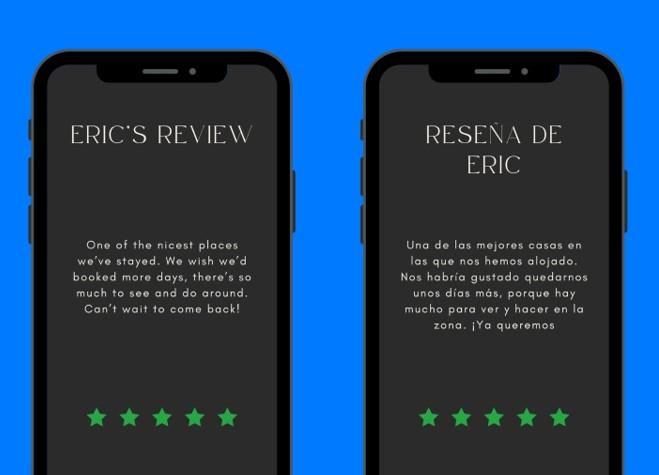
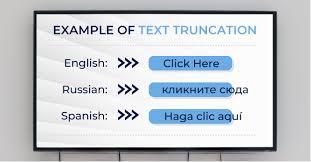

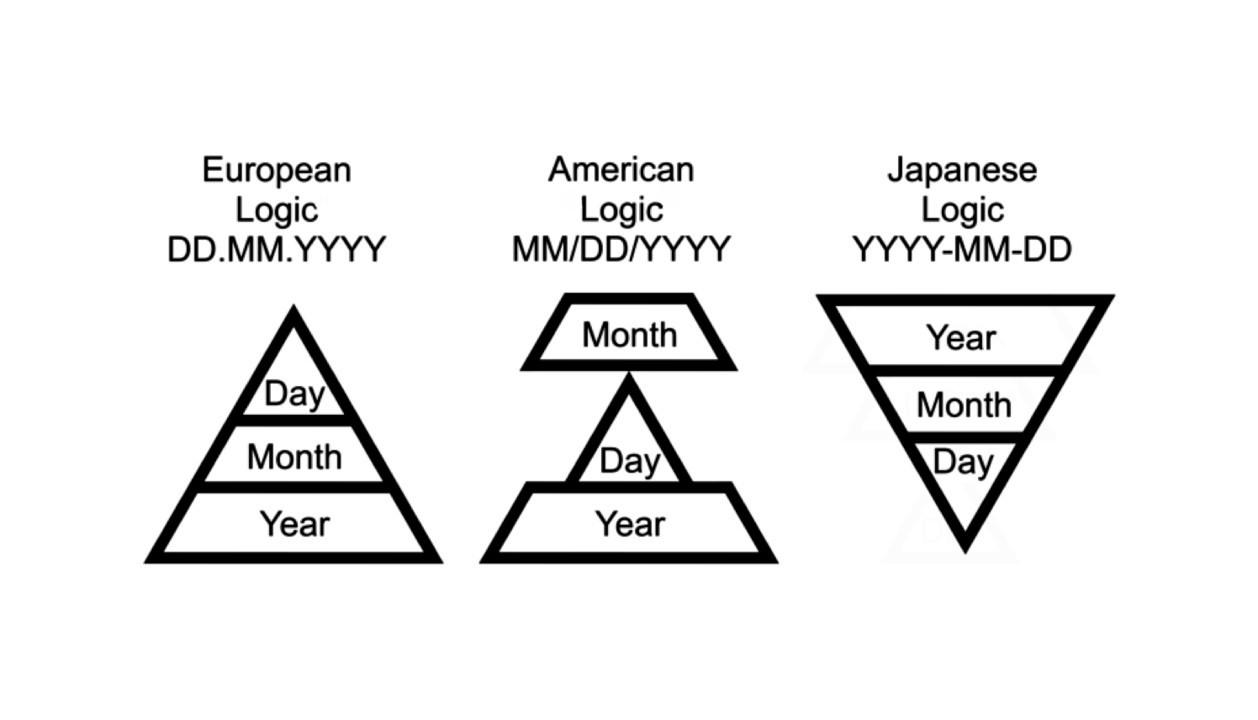
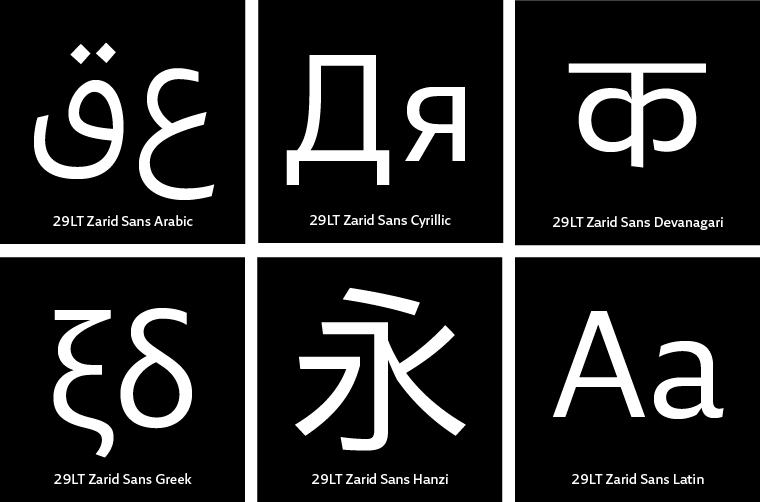


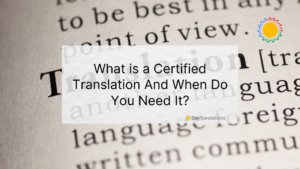
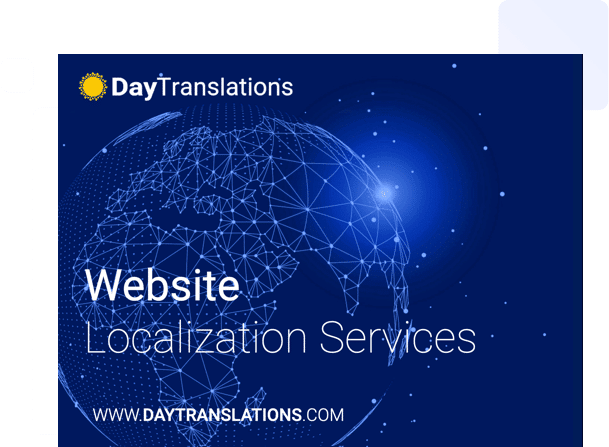






Sorry, the comment form is closed at this time.